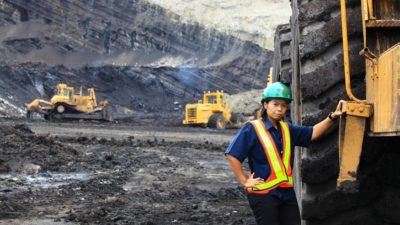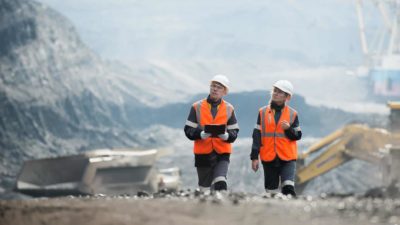The ASX has plenty of mining companies, but which one is the biggest mining share?
Readers may have heard of a number of different miners that produce different commodities such as BHP Group Ltd (ASX: BHP), Rio Tinto Limited (ASX: RIO), Fortescue Metals Group Limited (ASX: FMG), Newcrest Mining Ltd (ASX: NCM), South32 Ltd (ASX: S32), Northern Star Resources Ltd (ASX: NST) and Mineral Resources Ltd (ASX: MIN).
The smallest on the list is Mineral Resources, an iron ore, lithium and mining services business. It has a market capitalisation of $11 billion according to the ASX.
There are some very large ASX mining companies on the ASX.
According to the ASX:
The Fortescue market capitalisation is $65 billion.
The Rio Tinto market capitalisation of $43.6 billion.
The BHP market capitalisation is $261 billion.
So, the winner is BHP.
Why is BHP so big?
The company produces a number of commodities through its assets including iron ore, copper, nickel, metallurgical coal, petroleum and potash.
It produces minerals in both Australia and the Americas.
To give a context of how much BHP is producing, in FY22 it's expecting to produce between 1,590kt to 1,760kt of copper, between 249mt to 259mt of iron ore, between 38mt to 41mt of metallurgical coal and between 85kt to 95kt of nickel.
The ASX mining company has been making a lot of profit. In the six months to 31 December 2021, it revealed its 'continuing operations' numbers, which excludes the petroleum division it plans to divest. Continuing operations profit from operations was almost US$15 billion, while underlying attributable profit was US$9.7 billion. And that's just for six months.
BHP has been raking in the cash thanks to the elevated commodity prices.
Investors can use those profit numbers to value the business at a multiple of the earnings.
According to Commsec, the BHP share price is valued at 10x FY22's estimated earnings. While that is not a relatively high price-to-earnings ratio compared to many other S&P/ASX 200 Index (ASX: XJO) shares, it's enough to give BHP a market cap of $261 billion.
How could the BHP business change in the future?
When BHP divests its petroleum business to Woodside Petroleum Limited (ASX: WPL), it will no longer own those assets and it won't be entitled to that profit.
However, the ASX mining company will continue to own its iron ore mines and all the other assets. Plus, the business is working on expanding its potash asset in Canada – the Jansen project. This is planned to be the largest potash-producing mine in the world.
Potash is seen as a greener fertiliser. BHP points to the tailwind of a rising global population as to why it's an interesting commodity that could see growing demand:
The global population is projected to keep rising in coming decades. That means more mouths to feed, more affluent diets and growing strain on a finite land supply.
BHP share price snapshot
Since the start of the 2022 calendar year, the BHP share price has climbed 22%.









